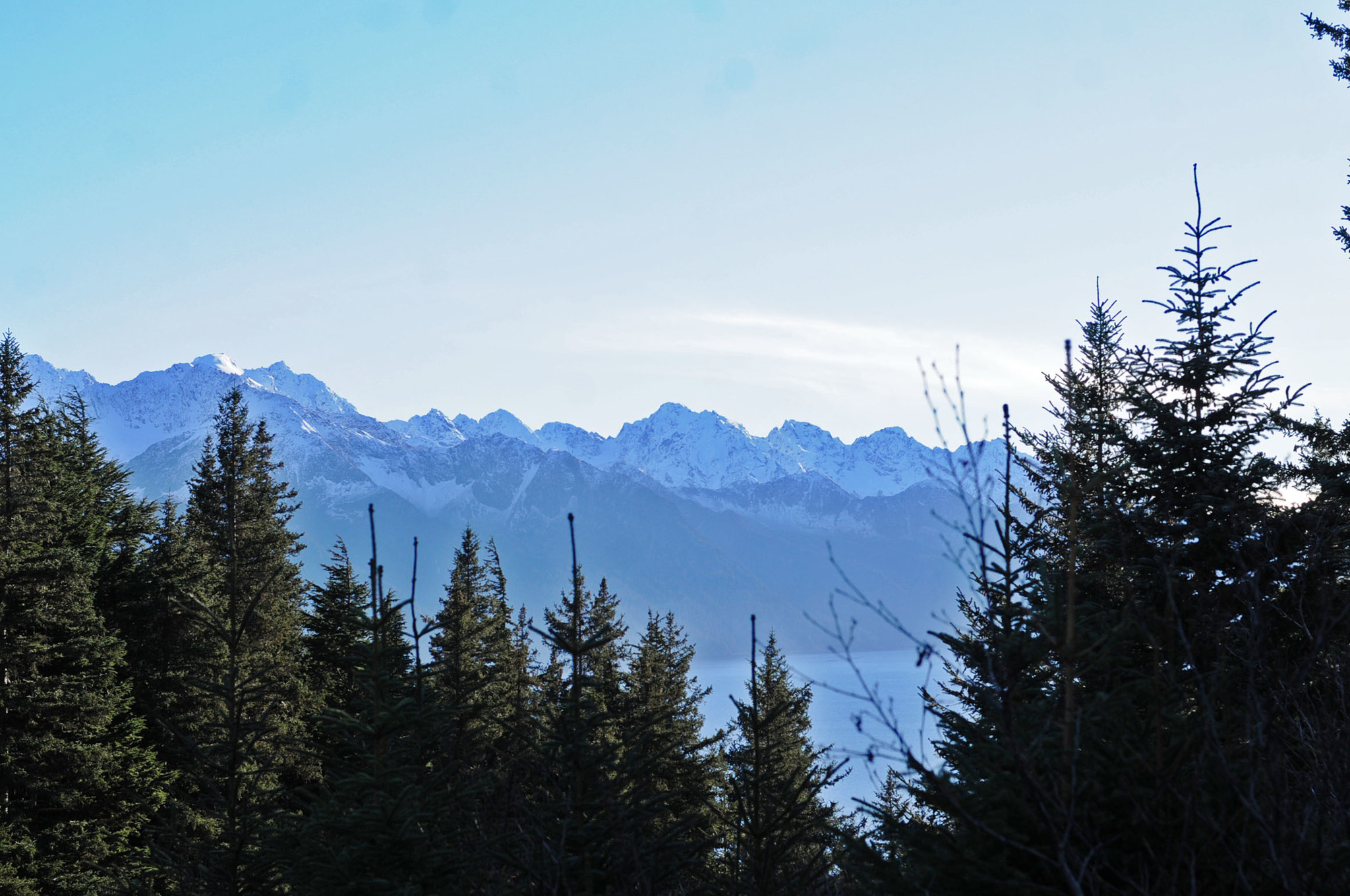Are exotic plants still exotic when the climate around them changes so that they fit right in?
That’s the question a local biologist posed to avid gardeners last week, and the answer isn’t so simple.
In his presentation to the Central Peninsula Garden Club on Tuesday, Kenai National Wildlife Refuge Supervisory Biologist John Morton dove into the issue of non-native plants and trees and what a quickly-warming Alaska climate will mean for gardeners and residents of the Kenai Peninsula alike. His biggest takeaway: “Take it with a grain of salt.”
Morton has taken part in tree inventory and other studies of peninsula plant life over the years in order to try to predict what the area’s ecology could look like by the end of the century.
“In a warming climate, basically you expect species to move northward in latitude and upward in elevation,” he said.
Alaska’s climate is warming at twice the rate of the Lower 48, Morton presented. As this happens, the different biological communities, called biomes, the state is split into will eventually change as well. The assumption when creating models for changing biomes is that the biomes will move to follow the climate, Morton said.
The western half of the peninsula is in what Morton called the boreal transitional biome, while the eastern half is in the North Pacific Maritime, or coastal rain forest, biome. This is what accounts for Sitka spruce on the Seward side of the peninsula and black spruce on the Kenai side. While showing models that researchers have made that attempt to predict what the state’s biomes will look like by the end of the century, Morton showed that the western half of the peninsula could likely be headed toward a more grassland-like biome. The eastern half of the peninsula, thanks to the barrier and rain shadow of the Kenai Mountains, would likely remain a coastal rain forest.
“It’s really easy to talk about these climate envelope models, but of course they don’t really consider a lot of the barriers that are there,” Morton said. “And when you start talking about the Kenai Peninsula, it’s easy to forget that we’re a peninsula, right? And so we have this 10-mile-wide isthmus up here, the Turnagain Arm, which means that things are going to have a hard time getting onto the peninsula, and similarly things that are trying to move northward from the Kenai are going to have a hard time getting off the peninsula.”
Over time, the models researchers made show Alaska’s biomes shifting gradually upward and becoming mixed.
“Basically two thirds of Alaska is trying to change,” Morton said. “I’m not saying it’s going to happen that fast, but that’s what’s happening.”
Morton cautioned that these predictions do not account for everything, and that several factors, like wildfires, soil type and the peninsula’s diverse wildlife, will also play into how the landscape changes over the coming years.
“It’s trying to change but it’s not happening quite as fast as these climate envelope models are showing,” he said. “Why? Because we have all of these other things that are playing out that are really important at the local scale.”
As changes do occur, they will manifest in different species calling the peninsula home that didn’t before. The very definition of an exotic plant can be hard to nail down, Morton said. Sometimes, that definition depends on people’s reaction to the plant.
When the non-native lodgepole pine were discovered on the peninsula, nothing much was done about them and they have been allowed to spread. Some were even planted after wildfires, Morton said. When elodea, an invasive water weed, was found in several lakes, Morton said the state spent about $800,000 eradicating it.
Plants that are outright invasive, with the ability to overpower native species, are a bit easier to classify as exotic, Morton said. Other than that, it can be hard to label plants going forward as their climate becomes more suitable for their existence, he said.
“But I’m a little bit more receptive to the notion that species that are occurring further south, maybe they ought to be living up here,” Morton said.
Morton has been taking notes of trees not traditionally found in Alaska that he has spotted in and around Kenai and Soldotna, including birch, elm, several varieties of maple and even oak.
One of the questions that remains is to what extent people should get involved and have influence over the effects of a warming climate, Morton said. This has already been done in some cases, as with the problem the peninsula’s spruce had with bark beetles. Wildfires, man-made and natural, also influence what grows in an area following that fire, as grass and fireweed often spring up in the aftermath, he said.
An advantage of living in Alaska is that, as the state is less affected by human touch, it can be easier to see the effects of a warming climate when one is looking for them, Morton said. One side effect that will be particularly pertinent for gardeners is an elongated growing season, Morton said.

